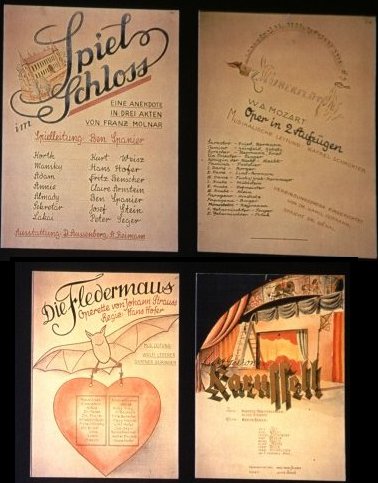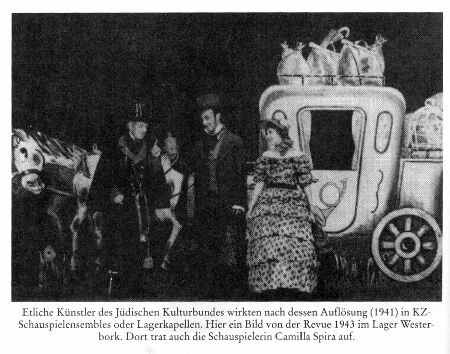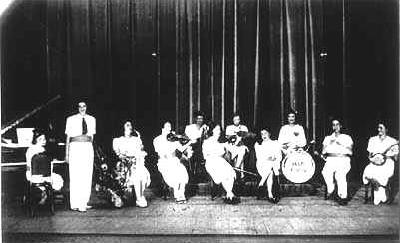Auschwitz theatre
[back] Auschwitz-Birkenau
[A theatre at a death camp? Films?]
Quotes
Christophersen attended
concerts in Auschwitz on Sundays where there was a weekly concert held under the
camp gate by internees who were professional musicians. Anyone could listen to
the concert who was walking around. (20-4960)
[Thies Christophersen] The 'False News' Trial of Ernst
Zündel -- 1988
A map taken from a book by former Auschwitz inmate Maximillian Kobler was, to
Felderer's knowledge, the only map of the camp to indicate the theatre as a
theatre, and to label the alleged gas chamber, not as a gas chamber, but as a
crematory, which, in Felderer's opinion, it actually was.
[Ditlieb Felderer]
The 'False News' Trial of Ernst Zündel -- 1988
He never saw a prisoner die at Auschwitz-Birkenau, nor did he believe the
Jews were treated any differently from the rest of the prisoners.......Christophersen
attended concerts in Auschwitz on Sundays where there was a weekly concert held
under the camp gate by internees who were professional musicians. Anyone could
listen to the concert who was walking around. (20-4960) ....Christophersen
was never under any prohibition not to discuss things at Birkenau with anyone in
civilian life. (20-4965) Although he lived 500 metres from the railroad to
Auschwitz- Birkenau, he never noticed anything with regard to the transports
which struck him. (20-4964) His wife visited him frequently in Auschwitz and
that his mother also came. (20-4941)
....Christophersen knew Birkenau had crematories and
had seen them from the outside. (20- 4947) But he never saw smoke or flames
shooting out of the chimneys nor did he ever smell the alleged stench of human
bodies. (20-4948) He did not know the number of crematories. (21-5005) He only
heard about the gas chamber allegation after the war. (20-4949)
[Thies Christophersen] The 'False News' Trial of Ernst
Zündel -- 1988
The theatre in Auschwitz I was used by the inmates to put on plays and
contained a stage and musical instruments. Felderer decided to investigate the
large building after an Auschwitz tour guide told him the building was
unimportant and was only used by the Germans to put garbage into. Museum
officials Piper and Czech later confirmed to Felderer that the building was used
as a theatre during the war. Survivor accounts such as Fania Fenelon's Playing
for Time also spoke of the Auschwitz orchestra. A large blow-up of a photograph
of the orchestra playing during the war was displayed at the Auschwitz Museum at
the main entrance. Felderer also showed a slide of a Ukrainian choir singing in
what Felderer believed was the theatre building. The photograph was taken from
the Dürrfeld file of the United States Archives. Dürrfeld, who had worked at
Monowitz, was later charged with war crimes and entered the photographs in his
defence.1 (18-4270 to 4273)
[Ditlieb Felderer] The 'False News' Trial of Ernst Zündel -- 1988
At Auschwitz today tourists were shown documentary films taken by the Soviets
at the liberation of the camp in the same room where inmates had watched films
during the war. Piper told Felderer that the seats in the cinema were identical
to those used by the inmates. (19-4413)
[Ditlieb Felderer]
The 'False News' Trial of Ernst Zündel -- 1988
Source:
John Ball's page
here (shown below)
Theater in the camps
 |
| Music programs hand-drawn in 1943 by camp inmates, with
paintings of a concert hall and an interior stage, together with
advertising for the Strauss opera "Die Fledermaus" and "Mozart music".
The list of instruments includes a piano. Most large German camps had
concert halls where inmates organized regular Saturday night theater
productions, operas, and dances attended by thousands of fellow-inmates.
These concerts were the envy of villagers outside camp who did not have
the instruments or halls for such gatherings. At times villagers were
invited and enjoyed the productions alongside camp inmates.
(Programs on display at Mauthausen camp)
|
|
 |
| Inmates arranged weekly music, singing, and theatre
productions which were attended on Saturdays and Sundays by inmates of
all camps in the Auschwitz area. Inmates entered from the visible door
while workers and families of other camps and also villagers entered
from the main door on the other side of the building. Up to 8 repeat
performances a day were necessary to accommodate everyone. The only
larger hall was in the Catholic church at Oswiecim town 2 kms (1.2 mi)
north. (photo: 1987) |
|
 |
| No photos are known to exist of Auschwitz theatre
productions but there are photos of other camp groups. The translation
of this is: "After the group disbanded in 1941, all of the Jewish
Cultural Group artists worked at different camps in acting groups or
choirs. This is a 1943 production in Westerbork Camp; here the actress
Camilla Spira appeared in many shows. |




